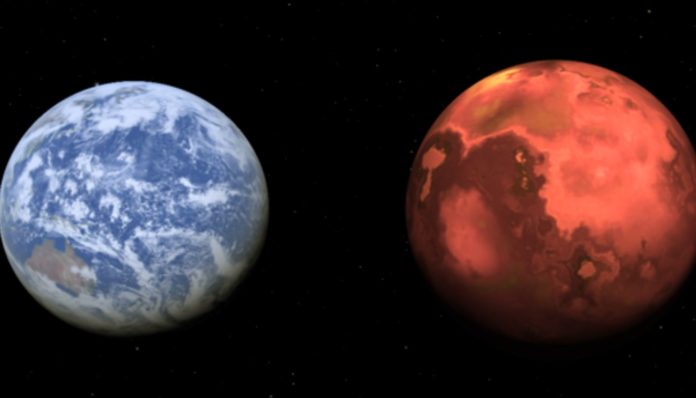They find one of the worlds that is most comparable to ours, despite the fact that it is a lava-filled hellscape.
It’s called TOI-500 b, and it’s 155 light-years away. It’s one of the most Earth-like planets ever discovered. This, however, should not lead us astray. It is a raging inferno due to its extreme proximity to its star, with surface temperatures surpassing 1,300 degrees Celsius. As a result, it’s a world of lava, uninhabitable for life yet thought to accurately depict what will happen to ours in billions of years by experts.
“It’s like seeing the Earth of the future,” says astrophysicist Luisa Maria Serrano, the first signatory of a recently published article on the new planet in Nature Astronomy.
Every 13 hours, TOI-500 b orbits its star. It is thus an excellent example of what astronomers refer to as “ultra-short period planets” (USP), which have orbits that last less than a day. Worlds of this type are known to be born in chaotic orbits distant from their stars, only to end up too near to them later because to catastrophic collisions with other objects in formation.
TOI-500 b is exceptional, because it appears to have arrived at its place in a different way than normal, the researchers said. It could not have been subjected to any kind of violence, and instead of forming in chaotic orbits as is typical, it was born in a circular and steady orbit. From there, it continued to circulate quietly for the next 2,000 million years, while its orbit was gradually restricted.
A system with 4 planets
TOI-500 b is part of a system that includes at least three other planets orbiting a K-type or ‘orange dwarf’ star, all of which have circular orbits but are significantly farther away from their sun. Unlike its peers, though, the new world is just about 2 million kilometers away from its parent star. Such a world could not exist in our Solar System, explains Serrano. TOI-500 b’s surface temperature is 1,343 degrees, much above the 430 degrees reached by Mercury, our solar system’s first planet. We believe that this world has no atmosphere, or that if it does, it is highly metallic, and that its entire surface is lava. TOI-500 b is able to withstand these temperatures because its star is a K-type, which is slightly cooler than our Sun, allowing the planet to be so close. Mercury, our solar system’s closest planet, is 58 million kilometers away.
An analog of Earth
TOI-500 b is very similar in size to Earth, only 1.16 times larger than our planet, but it has 1.65 times the mass. As a result, it is a solid and rocky planet. Davide Gandolfi, director of the Department of Astrophysics at the University of Turin and co-author of the paper, first noticed it with the TESS (Transiting Exoplanet Survey Satellite) Space Telescope in 2018, but its existence could not be confirmed until now. It is the first USP planet identified in a system with other planets that formed according to a non-violent hypothesis, as Serrano says, and it is one of the smallest and Earth-like planets discovered so far. The planet is now stable, according to their simulations.
Despite its terrible conditions, TOI-500 b is regarded as one of the best ten planets for researching atmospheres, according to researchers. But how is this possible if you don’t believe it has any atmosphere at all?
TOI-500 b, according to Serrano, has lost its primary atmosphere. The atmosphere in astronomy is not the same as the atmosphere in everyday language. The planet’s main atmosphere is made up of volatile components taken from the protoplanetary disk. It usually contains a lot of hydrogen, which makes it stick to rocks. However, a planet so close to its sun is unable to sustain it, and the hydrogen evaporates. TOI-500 b is too tiny and lacks sufficient gravity to support it. If it has an atmosphere, it will be secondary, consisting of gases emitted by the planet. If that’s the case, they believe it resembles Jupiter’s satellite Io.
An image of the future Earth
The new planet, according to the researchers, might be a true representation of what the Earth will be like in billions of years when the Sun becomes a red giant far larger than it is now. We are currently on a planet where you can still live, says Serrano. However, it’s becoming warmer, and we’re on our way to becoming a Venus-like world with a significant global greenhouse effect. However, before dying, the Sun will grow so huge that it will swallow the inner planets, such as Mercury and Venus, and possibly even the Earth. Even if it doesn’t, our planet will be so close to the Sun by then that its entire surface will be covered in lava, just like TOI-500 b is now. Looking at that planet is, in that way, like looking at the Earth of the future.
Image Credit: Getty
You were reading: TOI-500 b, a hell of lava, hides surprises for Earthling
